Why You Shouldn’t Care About The Dow Jones Industrial Average
Controversiality: 6/10
Experts: 3/10 Public: 9/10 Delta: 0.5
What this means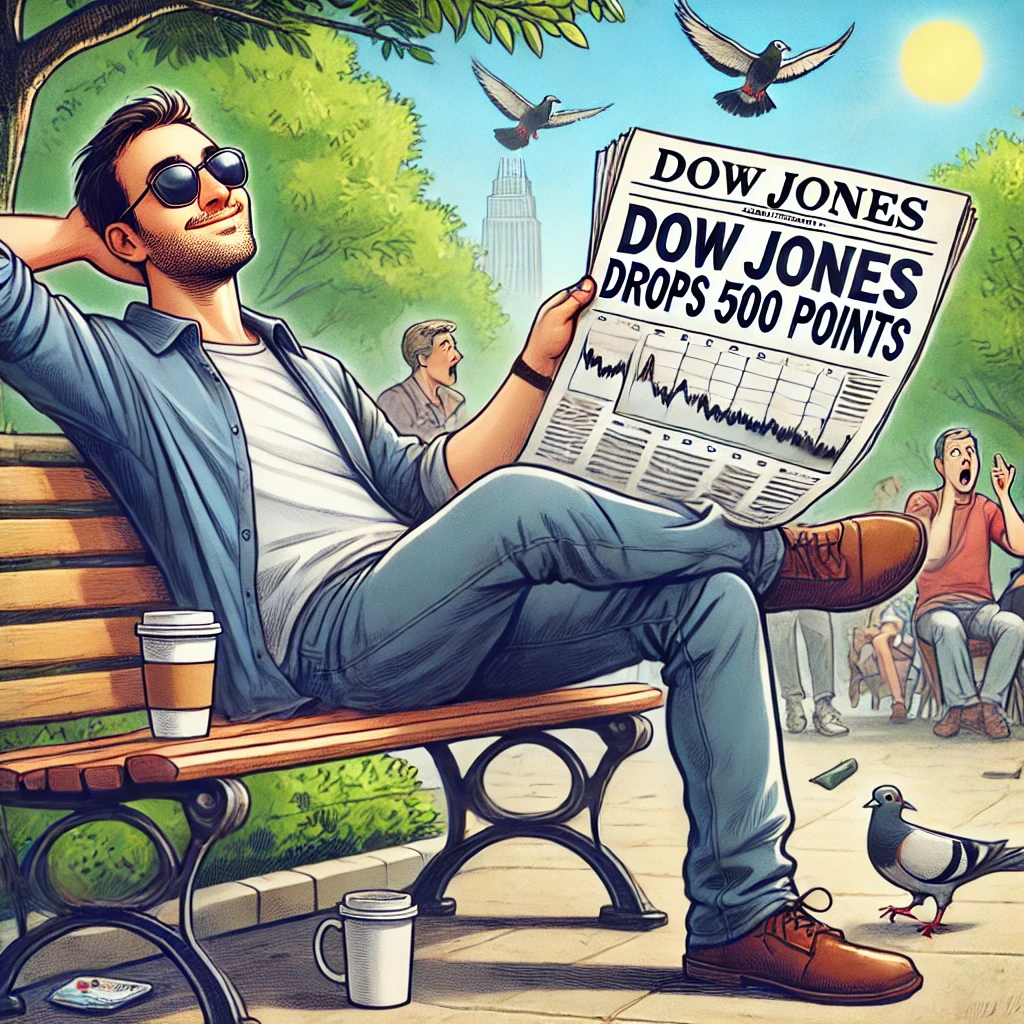
The Dow Jones Industrial Average (DJIA) is one of the most reported stock market indexes. When the stock market is being reported on the news, the Dow Jones Industrial Average(DJIA) is usually one of the first indices mentioned other than the S&P 500. Now it's outdated, misleading, and nobody cares about it.
Price Weighting:
The main issue with the DJIA is that it’s price weighted instead of market cap weighted. Indices like the S&P 500 are market cap weighted which means companies that are worth more represent proportionally more than companies worth less. The price of a stock doesn’t have much meaning in this case since it depends on the number of shares that exist. A price weighted sum could theoretically have no correlation to the sizes of the companies involved.
Low Diversity:
The index is made up of 30 top American companies. The team may try to pick companies that are representative of their whole industry, however, in the age of computers there’s no need to limit to 30 stocks when adding more diversity comes at near zero cost for the added benefit of being more representative of the whole market.
Computation:
The following shows the calculation of the index. It's a sum of the stock prices divided by the Dow Divisor. The Dow Divisor is used to keep the index consistent across additions/deletions of stocks leaving/entering the index as well as stock splits.
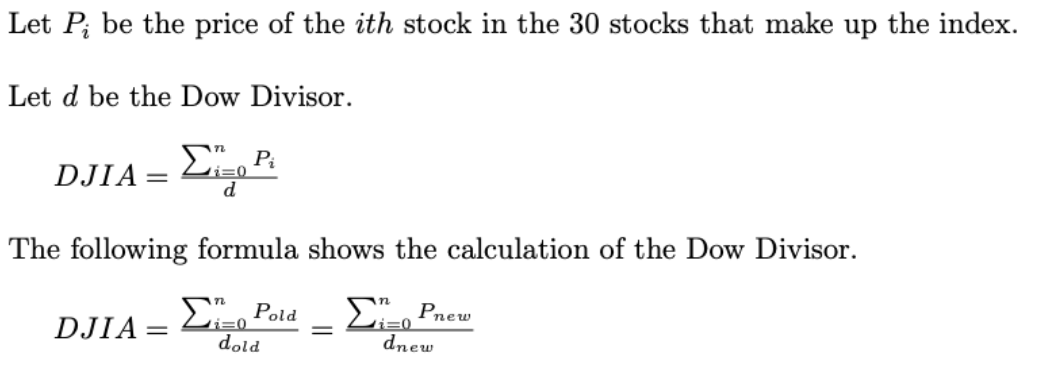
History:
The Dow Jones Industrial Average was created in the 1800s, which was much before the age of computers. At this time, it was probably created to be as simple as possible to compute since it was likely done by hand. The use of computers has nullified this reason, and the index may only exist since people are used to hearing about it. People may have gotten attached to hearing about the price of DJIA.
A Brief Look at the Data:
The following data becomes more outdated as time passes, however, the point still stands. As of December 23, 2024, UnitedHealth Group (UNH) has a market cap of 460 billion dollars and Nvidia has a market cap of 3.4 trillion. In a market cap weighted index, like the S&P 500, NVDA should be weighed over 7X more than UNH. However, in the Dow Jones Index we have NVDA at 1.9% weight and UNH at 7.2% weight.
Someone can argue that people have put a lot of thought into which companies should be included and maybe UNH represents more of the market than just UNH. You would then think that tech stocks would have maybe one or two representing them, but that’s not the case. There are several such as Microsoft, Apple, Amazon, and Nvidia. Each of these are not weighted fairly either. Microsoft has a market cap of 3.2 trillion and Apple has a market cap of 3.9 trillion, which are fairly similar. However, we see that Microsoft is weighed at 6.3% in the Dow Jones index with Apple at 3.7%.
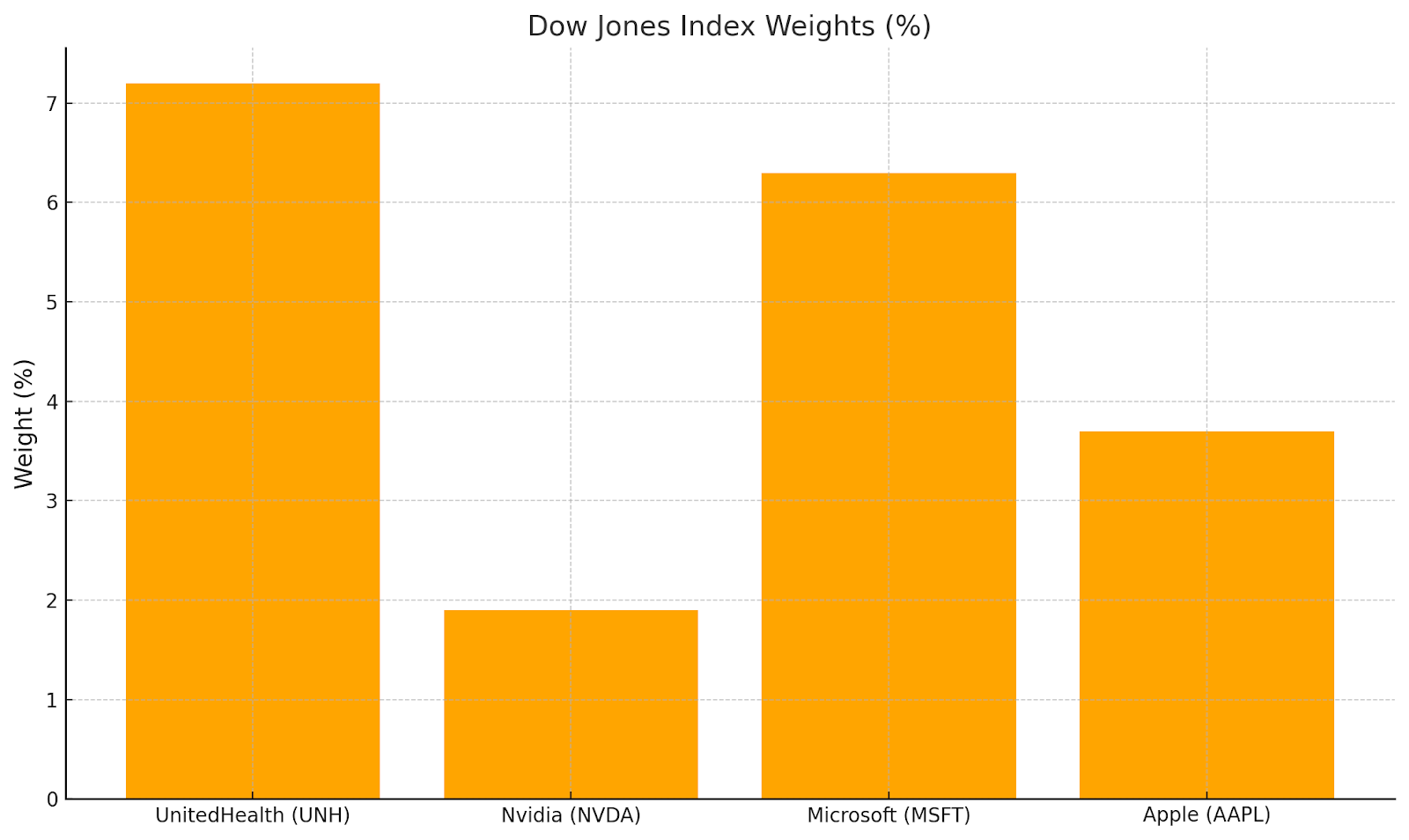
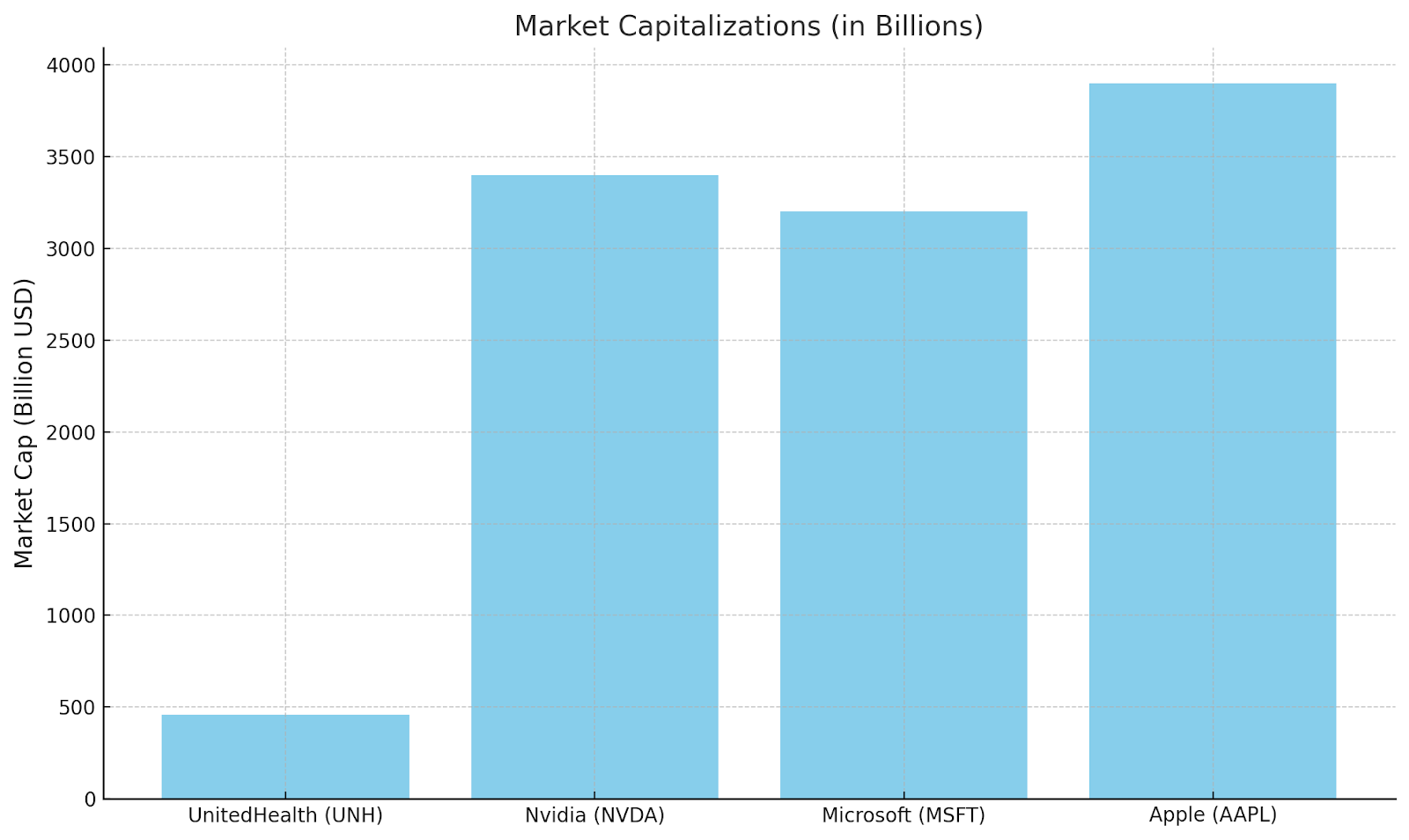
Market-Cap vs. Price Weighted Indexes for all 30 Stocks:
The following shows bar charts of the normalized weighting of all 30 stocks in the index. We can see here the stark difference between the two as a market cap weighted index is mostly correlated with just a few stocks whereas the price weighted index is all over the place. Very small companies can cause a big movement in the price of the entire index while big companies don’t have much of an impact as they should in the market.
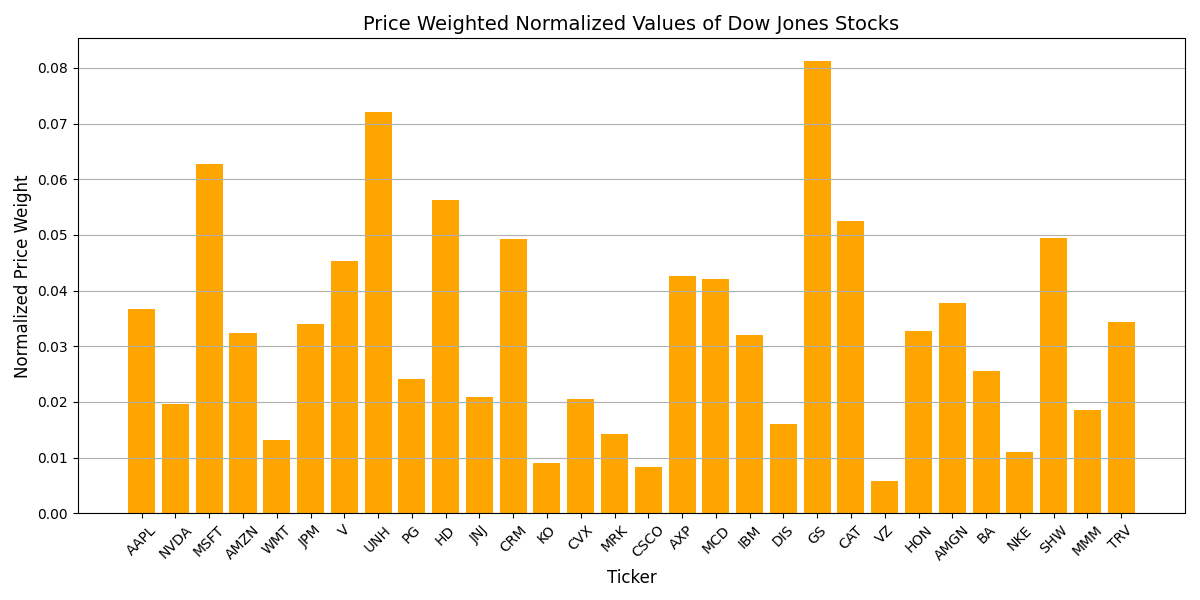
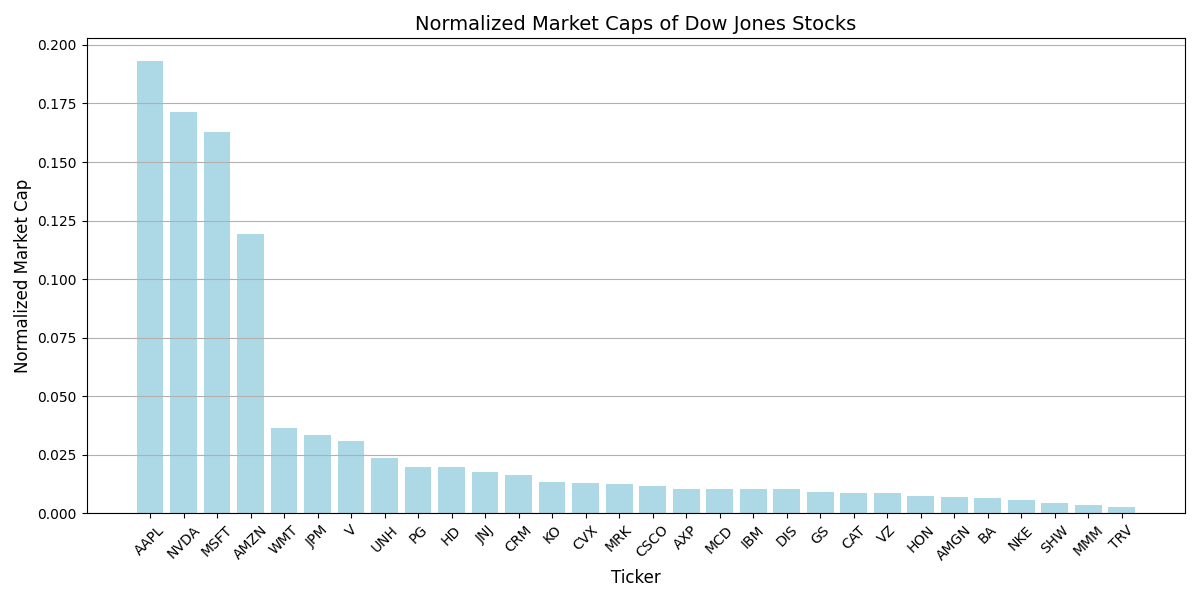
Conclusions:
As a society we should stop computing the value of this index and reporting it. Critics of this argument may argue that it’s still highly correlated with common indices like the S&P 500. However, there’s no reason to pick an outdated index over something more representative of the market. You may be able to get a good idea if the stock market is crashing or booming since you’ll see big point jumps on the news. However the actual point value and even percent change have less meaning than a market-cap weighted index for the reasons above and below. There’s also no reason to only keep track of only 30 stocks with the compute power we have available today.
Here's a link to a python srcipt to generate the graphs if you want more recent data.
Download Python ScriptHere's a link to a Wikipedia that gives good info on DJIA. Specifically look at the section on "Issues with market representation"
Wikipedia